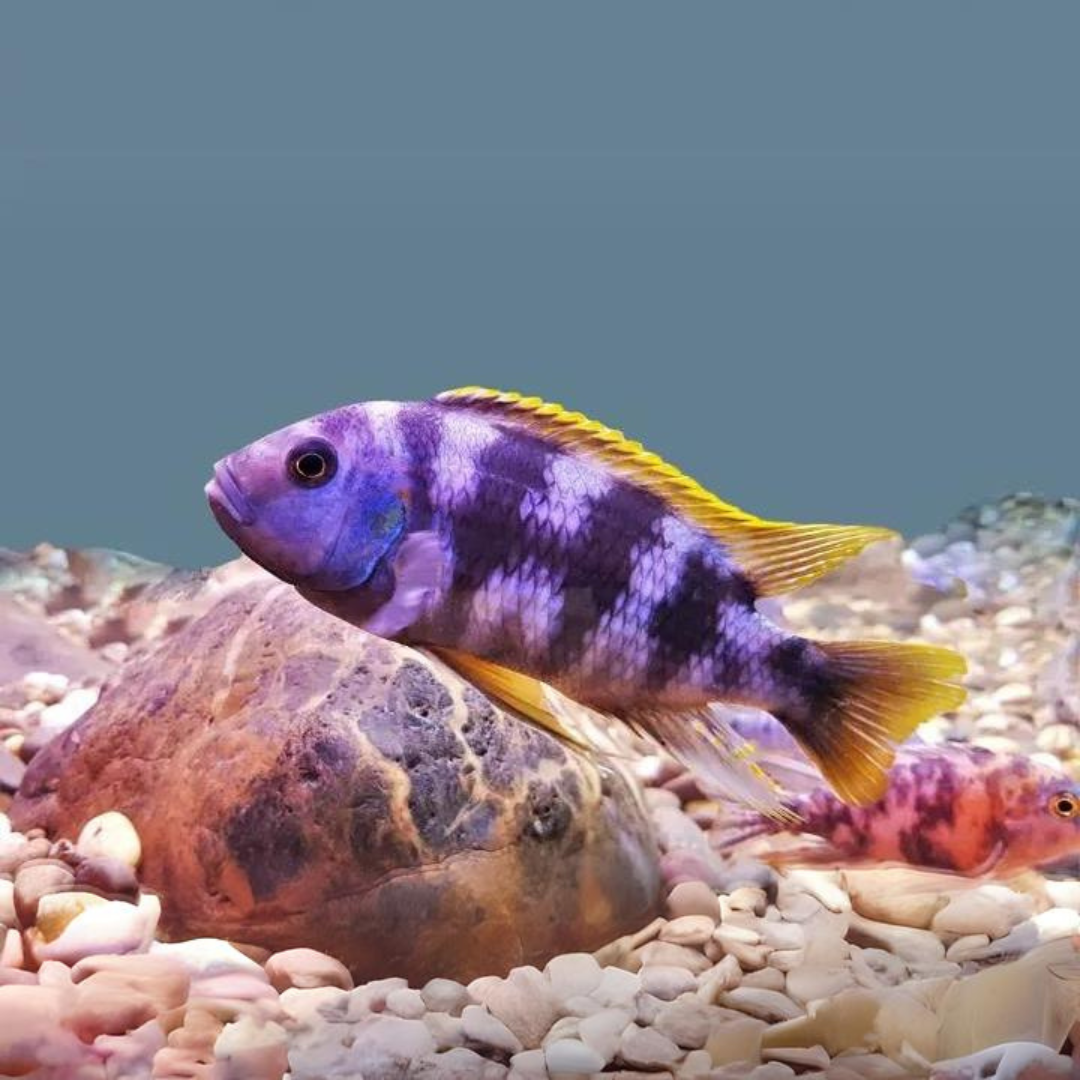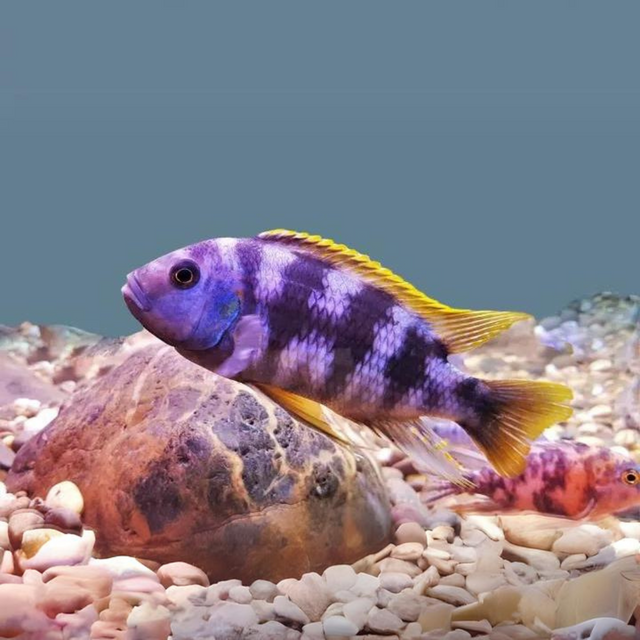Malawi Mbuna Cichlid Lavender (Size 2 Inches) | Single
Malawi Mbuna Cichlid Lavender (Size 2 Inches) | Single is backordered and will ship as soon as it is back in stock.
Couldn't load pickup availability
Description
Description
The Malawi Mbuna Cichlid Lavender (Size 2" to 2.5") is a captivating freshwater fish known for its delicate lavender hues and energetic temperament. Native to the rocky shores of Lake Malaw The Malawi Mbuna Cichlid Lavender (Size 2" to 2.5") is a captivating freshwater fish known for its delicate lavender hues and energetic temperament. Native to the rocky shores of Lake Malawi, this Mbuna cichlid stands out with its soft, pastel coloration and bold presence in any aquarium.
Appearance: At 2" to 2.5", juvenile Lavender Mbunas showcase subtle shades of light purple or lavender, which can intensify as they mature. Males tend to display a brighter and more pronounced color, while females generally appear more muted with a softer lavender tone. Their elongated, sturdy body structure is typical of Mbunas, complemented by rounded dorsal and anal fins. As they grow, the contrast between their purple body and dark markings becomes more defined, making them a beautiful visual addition to any tank.
Temperament and Behavior: Like most Mbunas, the Lavender Mbuna is territorial and aggressive, particularly toward other males or similar-sized species. They are highly active and thrive in aquariums that offer plenty of space for swimming and exploration. Their aggression is mostly directed toward establishing dominance, so ensuring enough room and hiding spots is essential to minimize conflict.
This cichlid prefers to live in groups with a clear hierarchy, and it’s recommended to house them with other similarly aggressive species.
Tank Setup: The Lavender Mbuna requires a tank with plenty of rock formations and hiding spots, mimicking the rocky environment of Lake Malawi. A 250 litres or larger is ideal for accommodating their territorial nature. Providing a tank with caves, crevices, and territories can help reduce aggression and allow the fish to retreat when needed.
The water conditions should mimic their natural habitat with a pH of 7.8 to 8.6 and a temperature range of 75°F to 82°F (24°C to 28°C). High-quality filtration and regular water changes are necessary to maintain the best water conditions.
Diet: The Lavender Mbuna is primarily herbivorous, feeding on algae and plant matter in the wild. In captivity, a diet rich in vegetable-based flakes or pellets with added spirulina is recommended. They may also enjoy fresh vegetables such as blanched zucchini or spinach. Avoid feeding them high-protein diets, which can lead to digestive issues like bloat—a common concern for Mbuna species.
Compatibility: The Lavender Mbuna is best suited for tanks with other Mbuna cichlids or similarly aggressive species. It’s important to provide ample space and hiding spots to minimize aggression, as these fish can become territorial, especially males. They do well in slightly overstocked tanks, which helps distribute aggression across more individuals.
Appearance: At 2" to 2.5", juvenile Lavender Mbunas showcase subtle shades of light purple or lavender, which can intensify as they mature. Males tend to display a brighter and more pronounced color, while females generally appear more muted with a softer lavender tone. Their elongated, sturdy body structure is typical of Mbunas, complemented by rounded dorsal and anal fins.
Temperament and Behavior: Like most Mbunas, the Lavender Mbuna is territorial and aggressive, particularly toward other males or similar-sized species. They are highly active and thrive in aquariums that offer plenty of space for swimming and exploration. Their aggression is mostly directed toward establishing dominance, so ensuring enough room and hiding spots is essential to minimize conflict.This cichlid prefers to live in groups with a clear hierarchy, and it’s recommended to house them with other similarly aggressive species.
Tank Setup: The Lavender Mbuna requires a tank with plenty of rock formations and hiding spots, mimicking the rocky environment of Lake Malawi. A 55-gallon tank or larger is ideal for accommodating their territorial nature. Providing a tank with caves, crevices, and territories can help reduce aggression and allow the fish to retreat when needed. The water conditions should mimic their natural habitat with a pH of 7.8 to 8.6 and a temperature range of 75°F to 82°F (24°C to 28°C). High-quality filtration and regular water changes are necessary to maintain the best water conditions.
Diet: The Lavender Mbuna is primarily herbivorous, feeding on algae and plant matter in the wild. In captivity, a diet rich in vegetable-based flakes or pellets with added spirulina is recommended. They may also enjoy fresh vegetables such as blanched zucchini or spinach. Avoid feeding them high-protein diets, which can lead to digestive issues like bloat—a common concern for Mbuna species.
Compatibility: The Lavender Mbuna is best suited for tanks with other Mbuna cichlids or similarly aggressive species. It’s important to provide ample space and hiding spots to minimize aggression, as these fish can become territorial, especially males. They do well in slightly overstocked tanks, which helps distribute aggression across more individuals.


